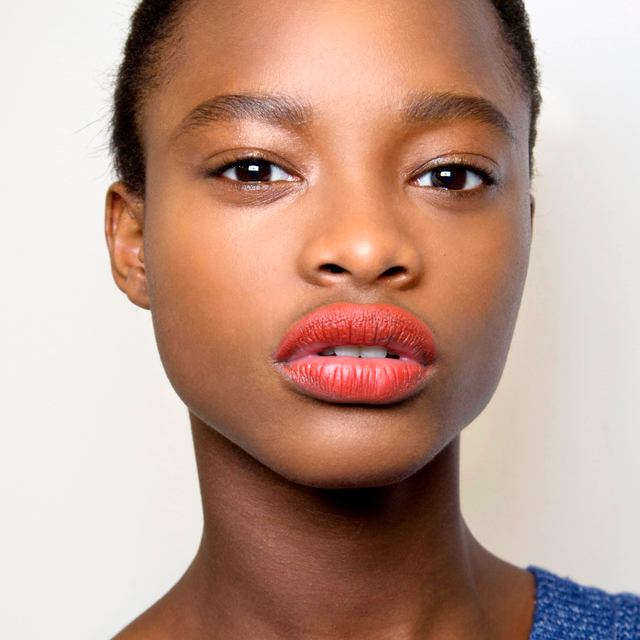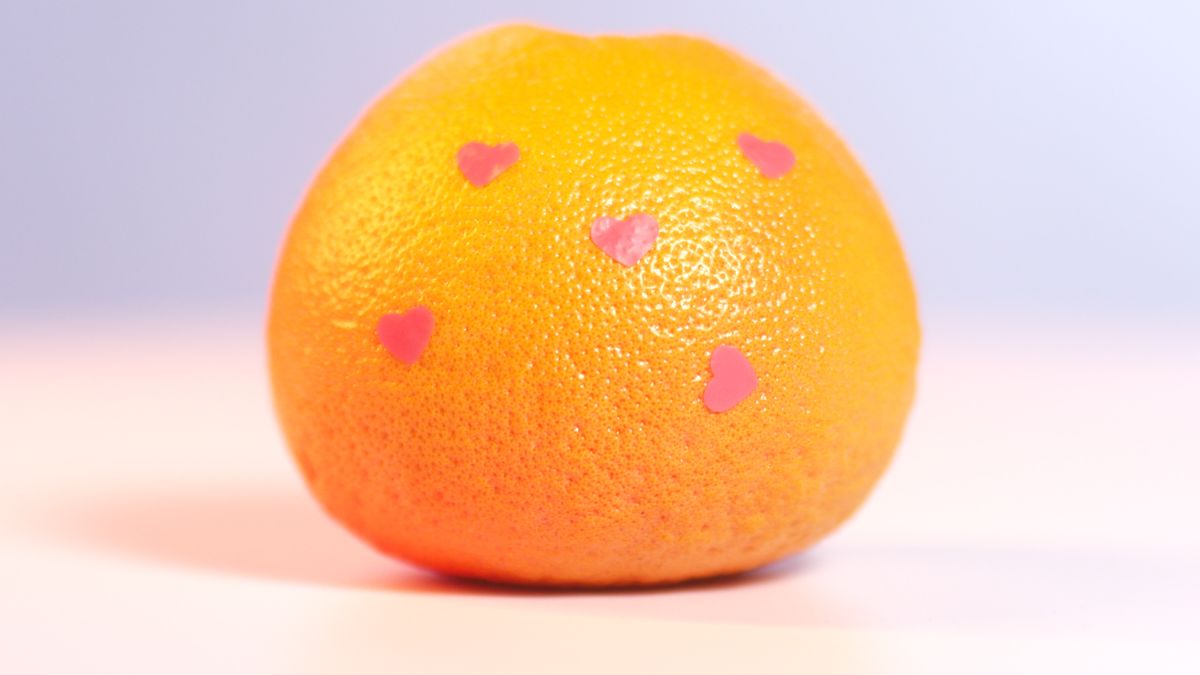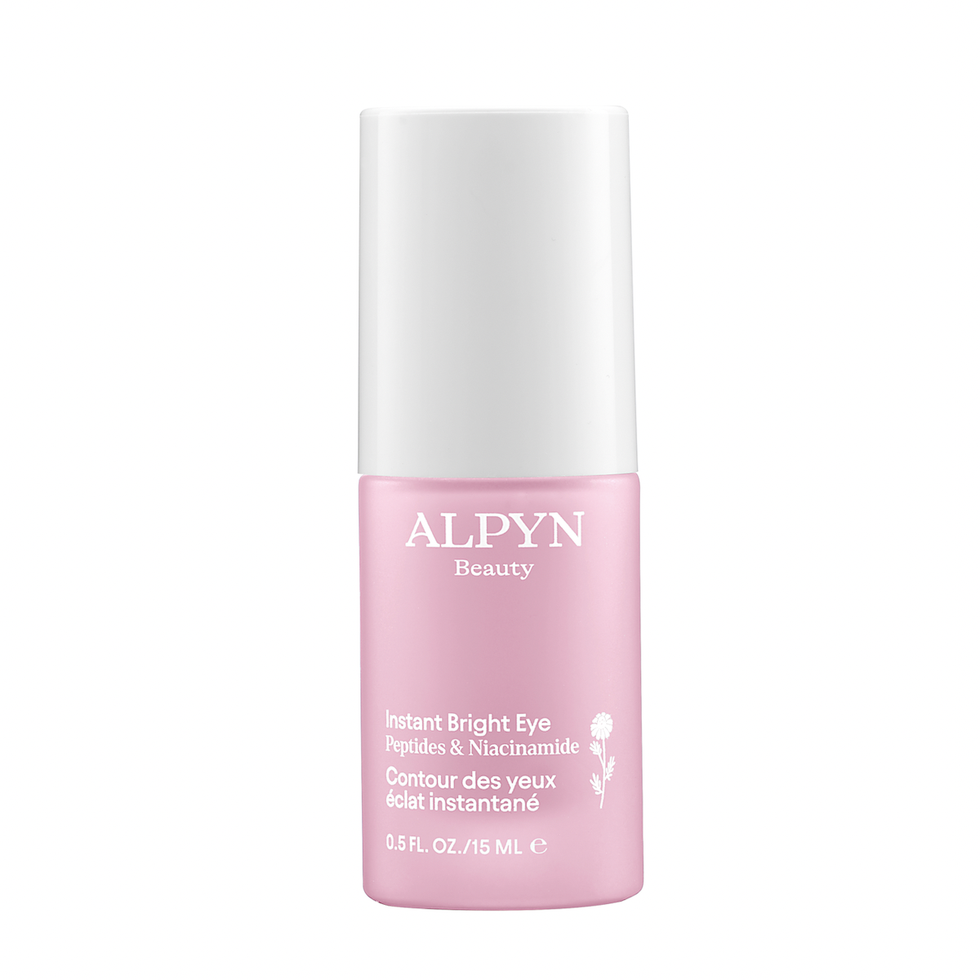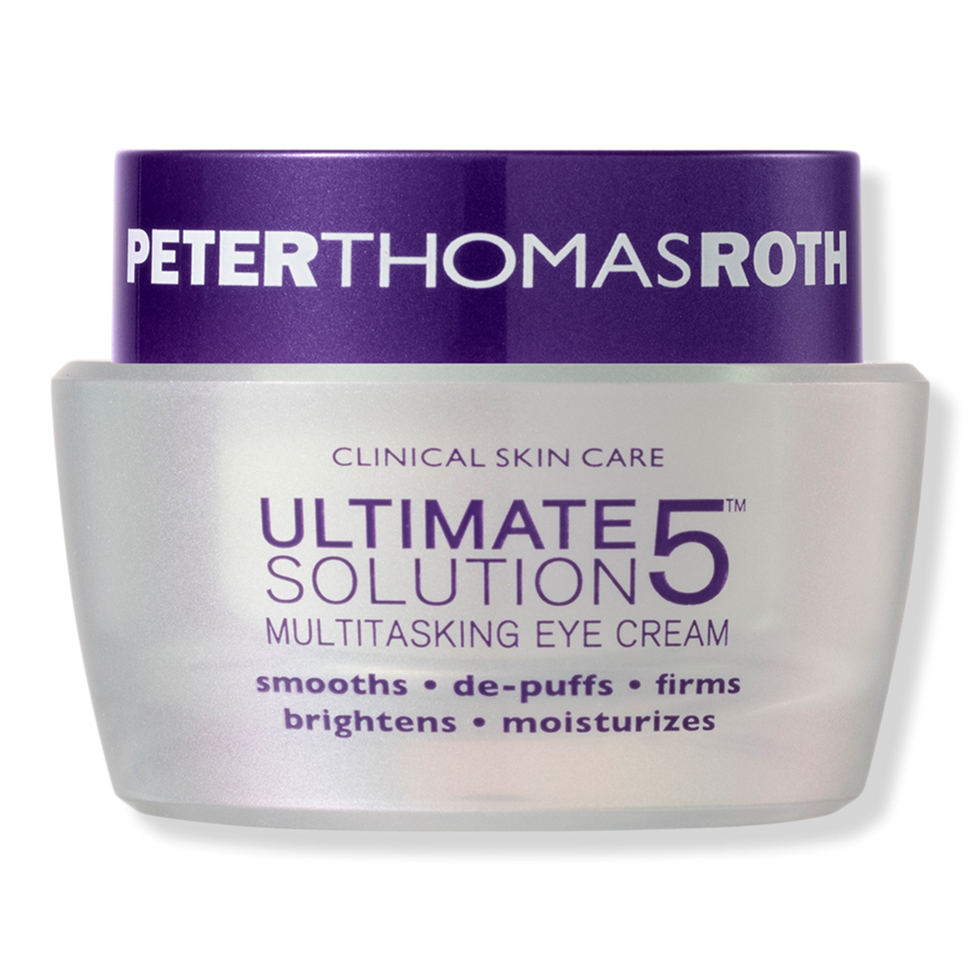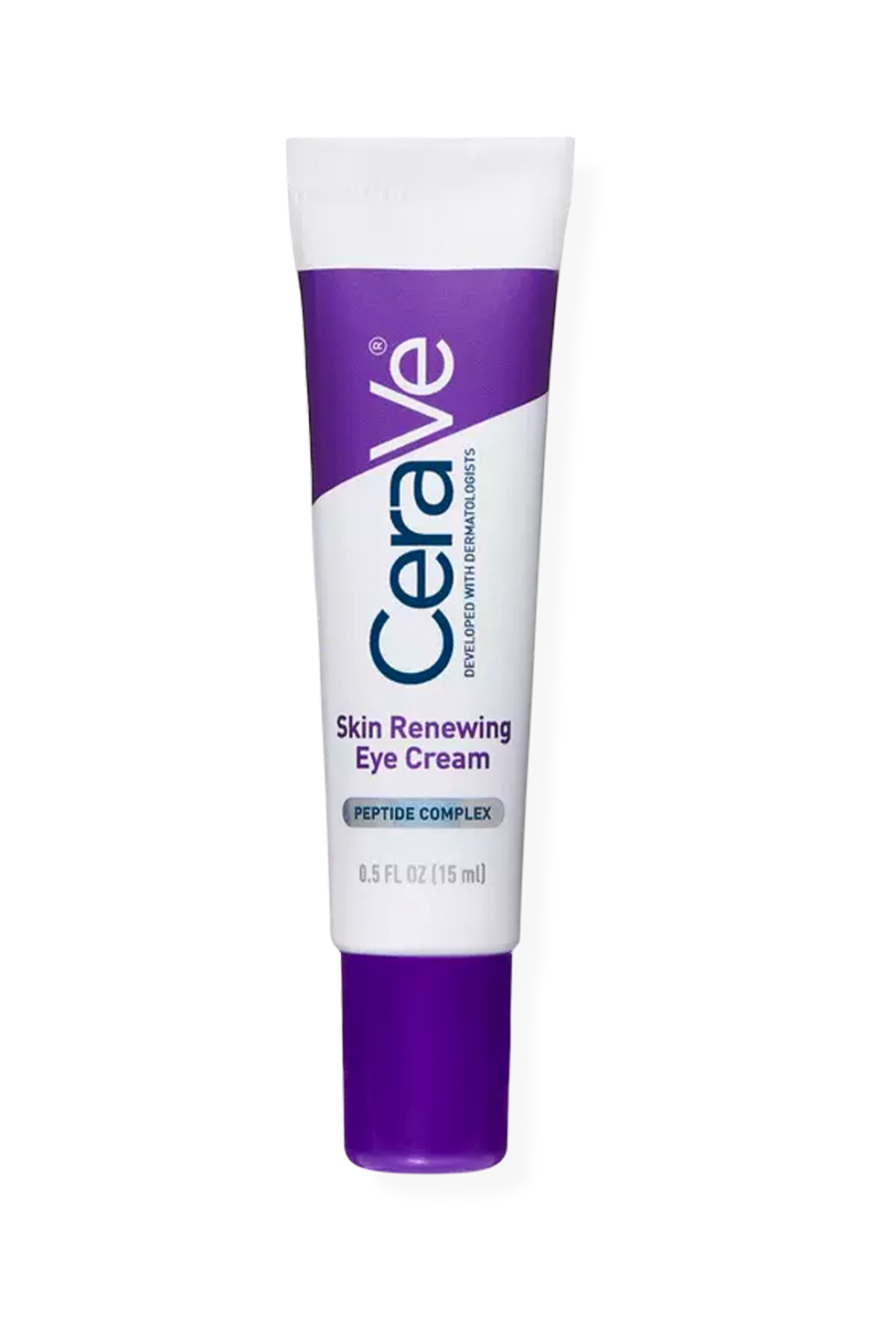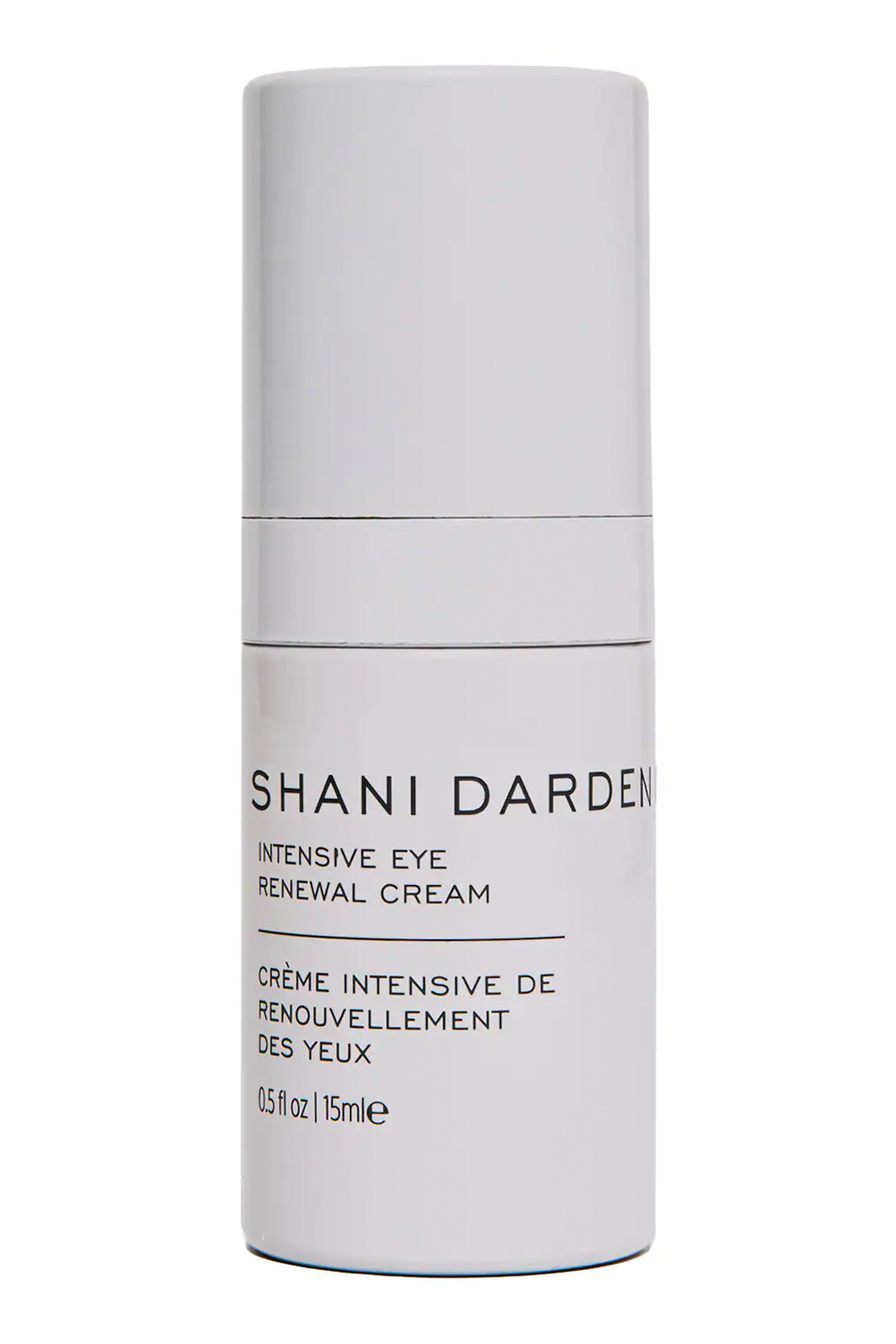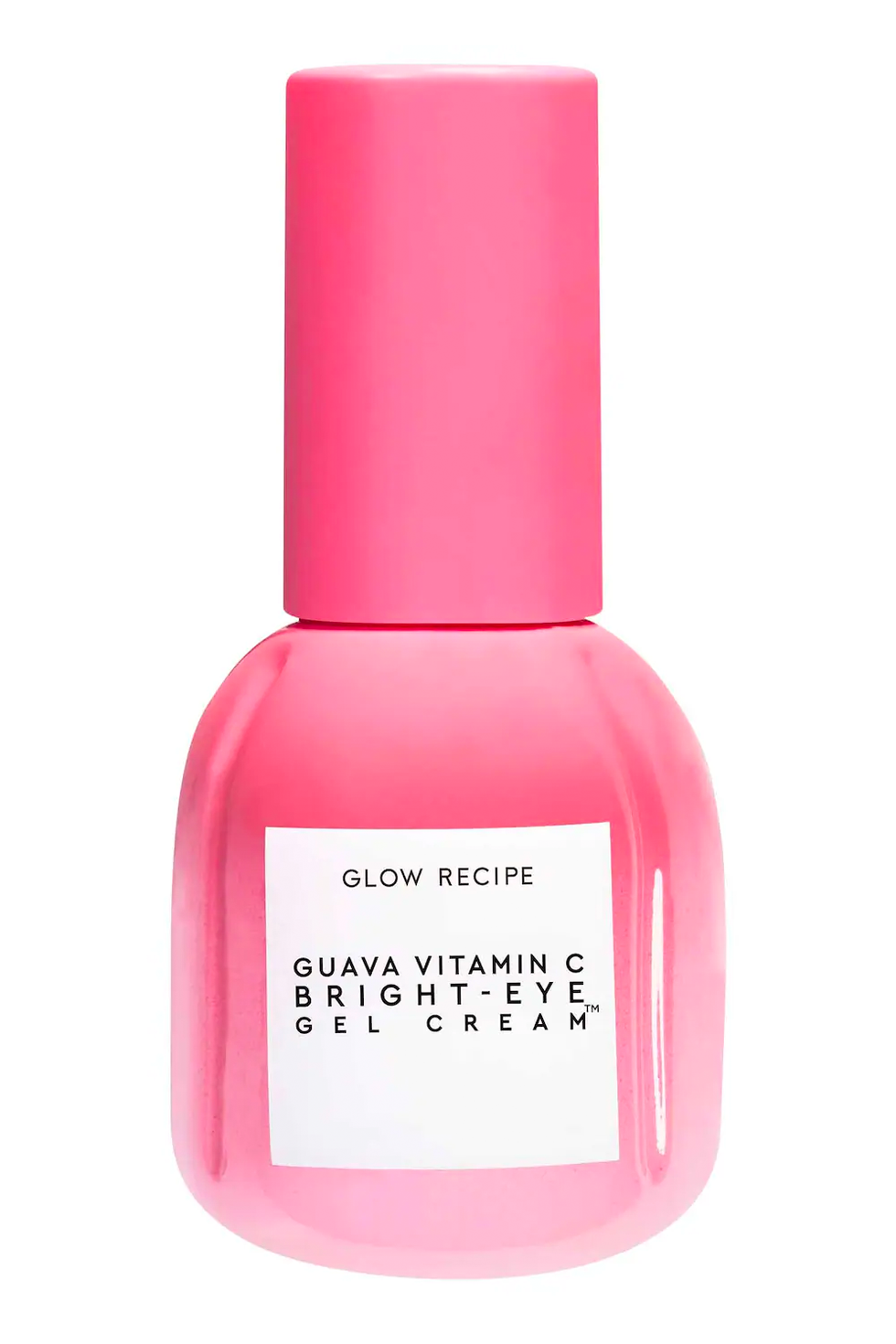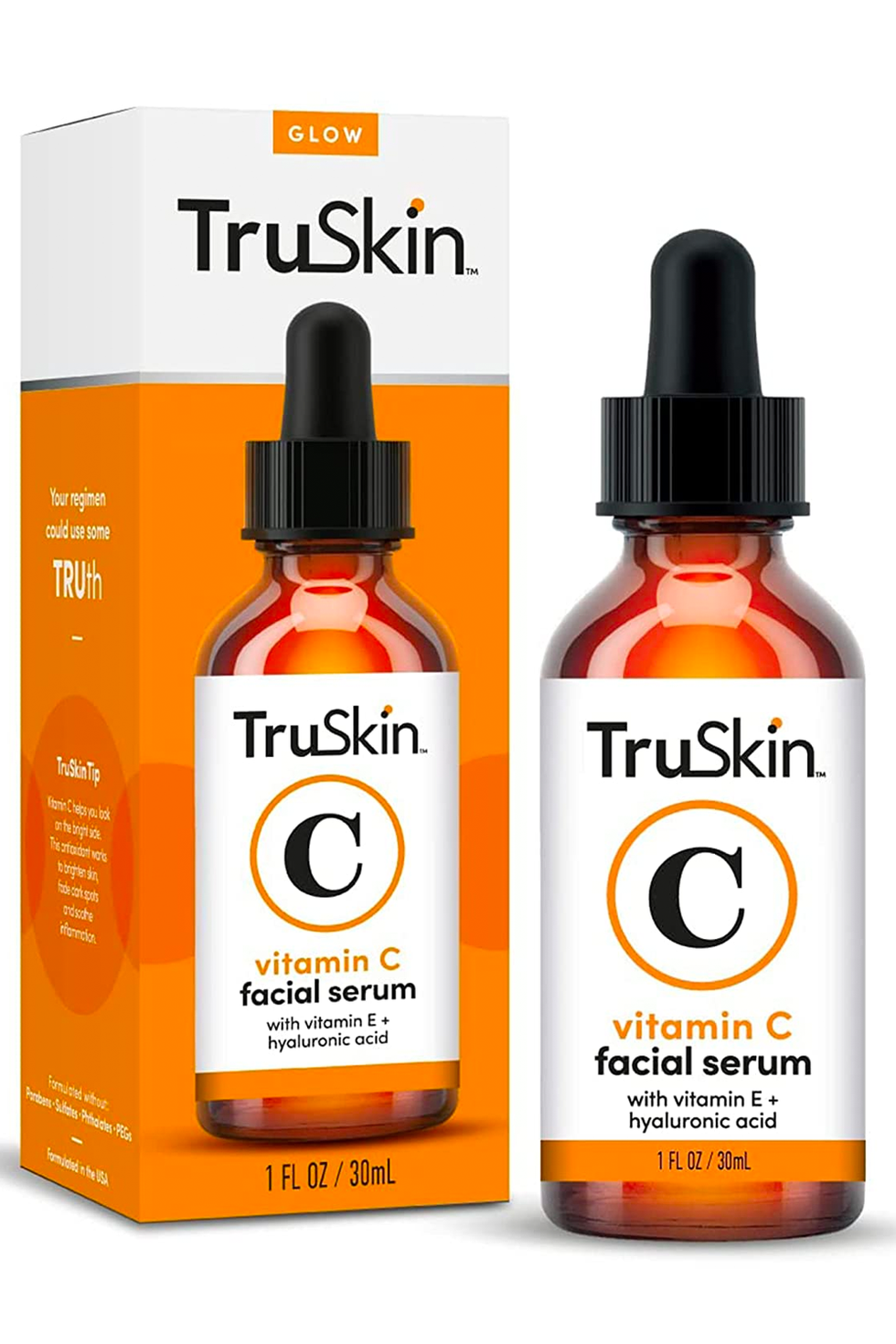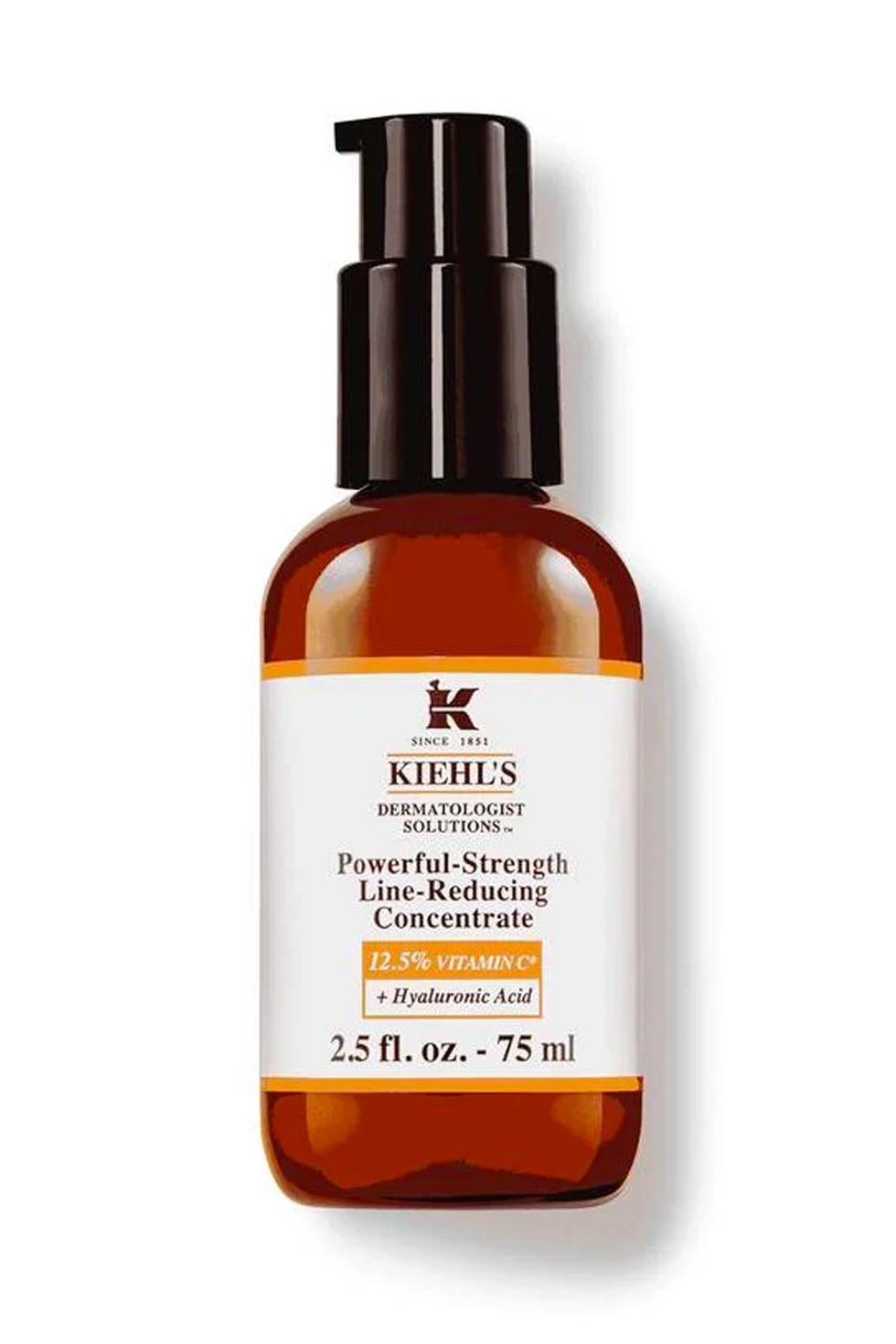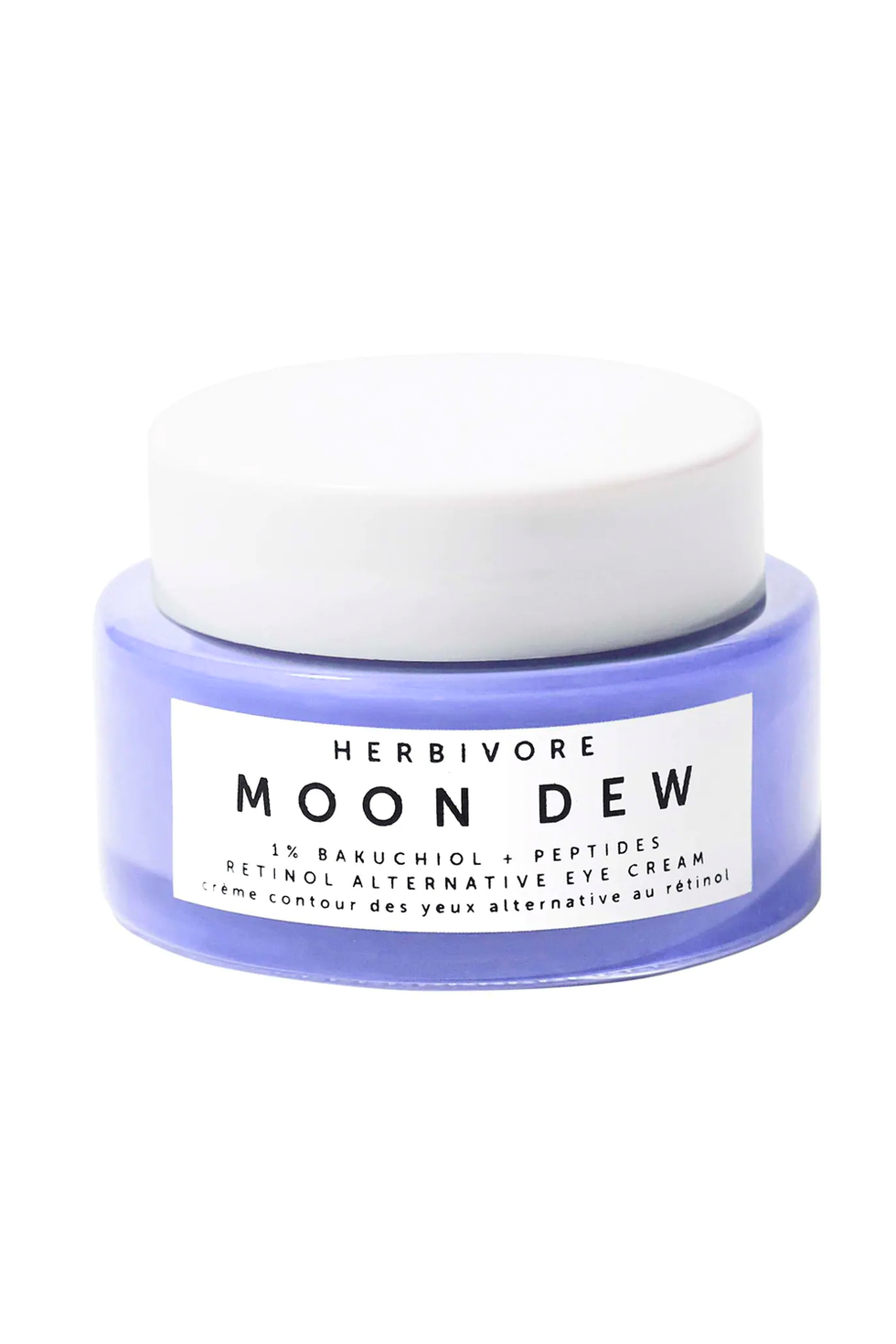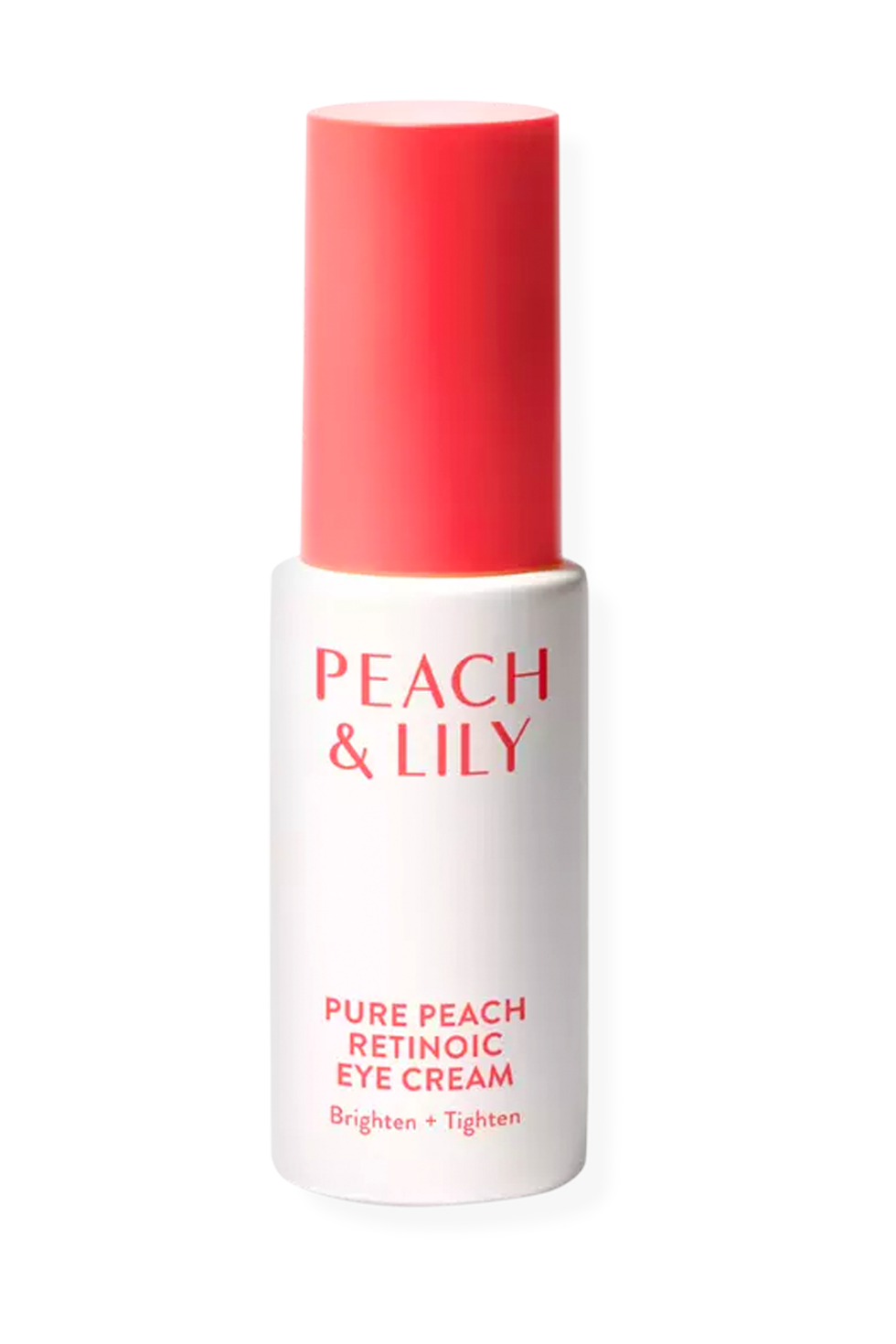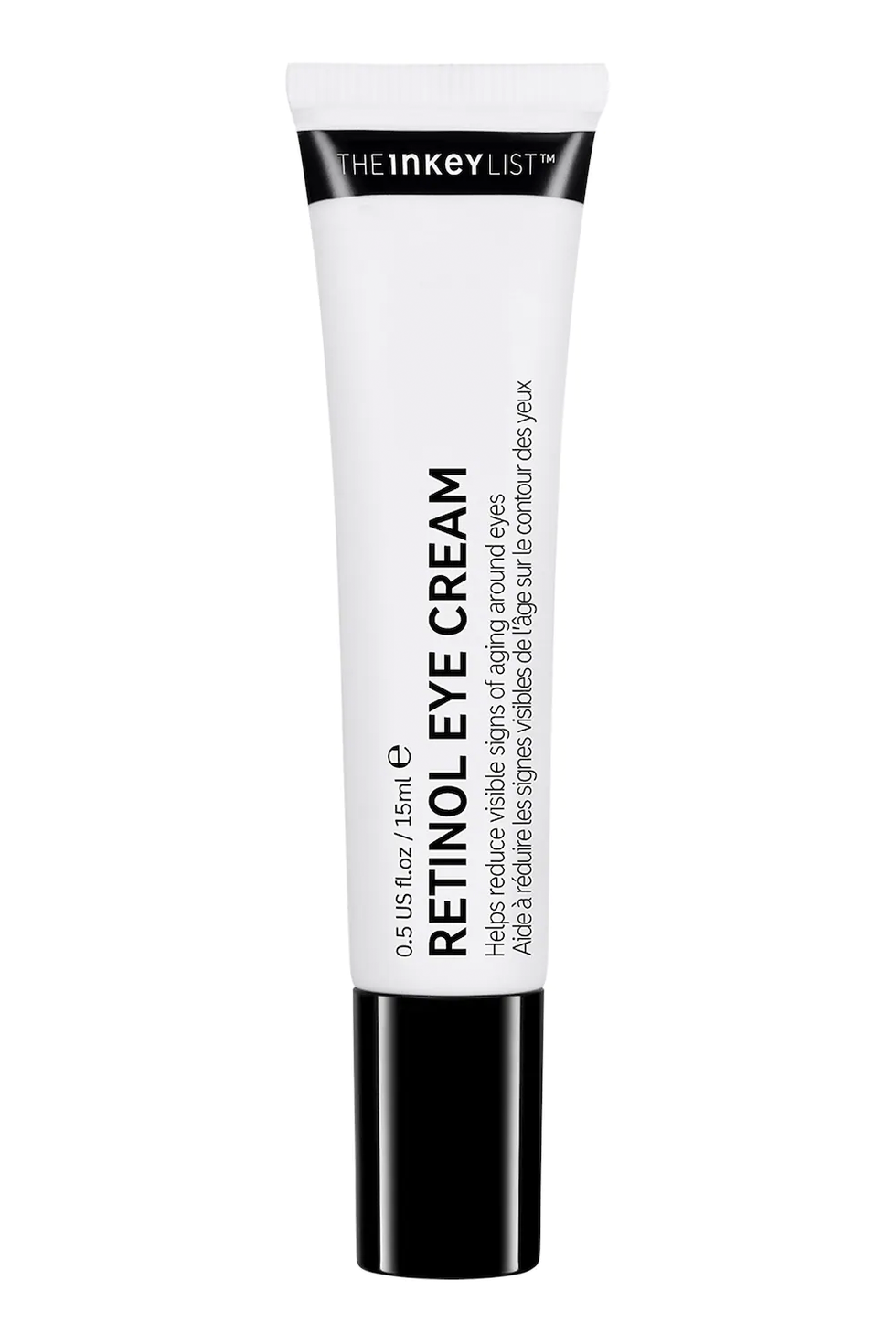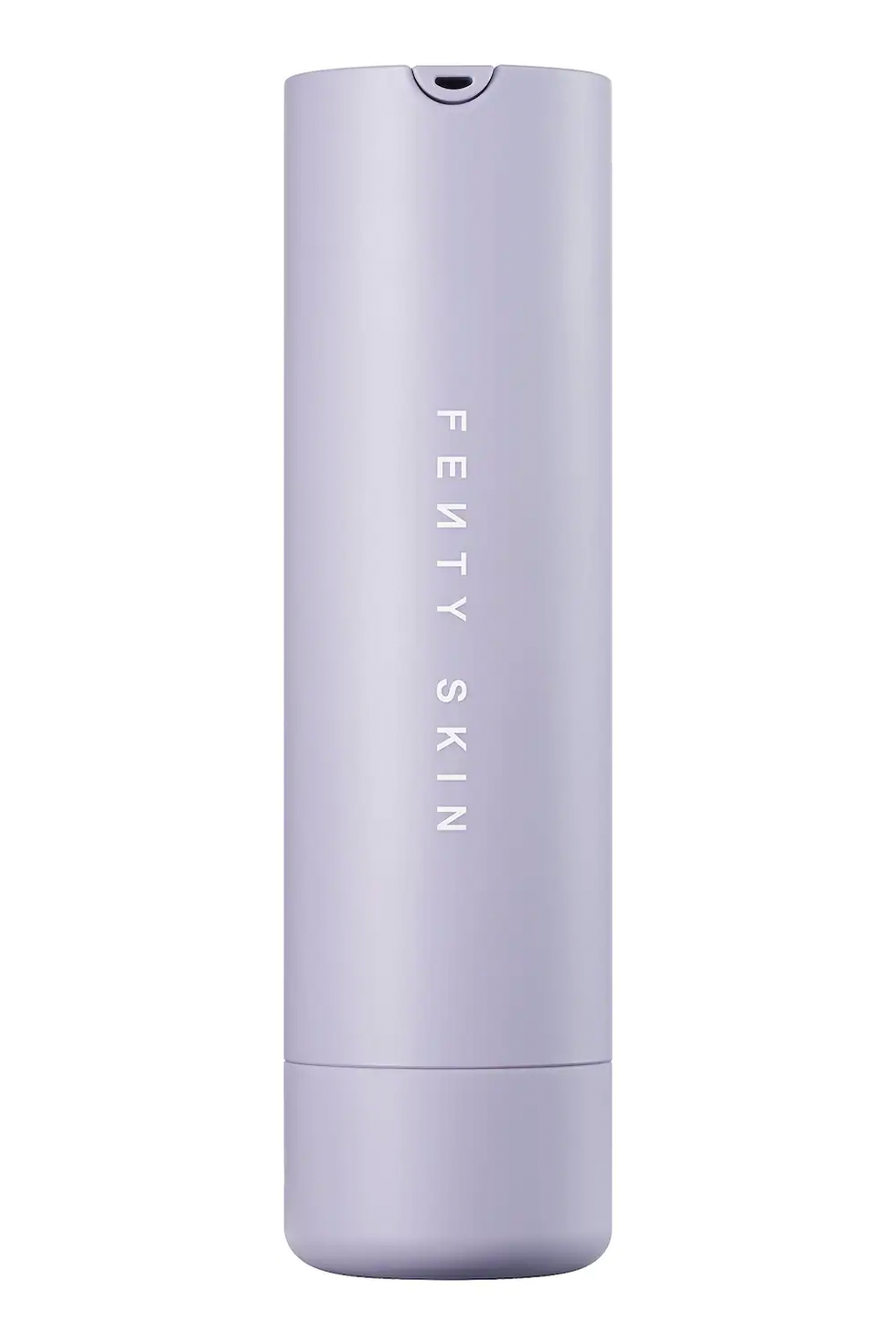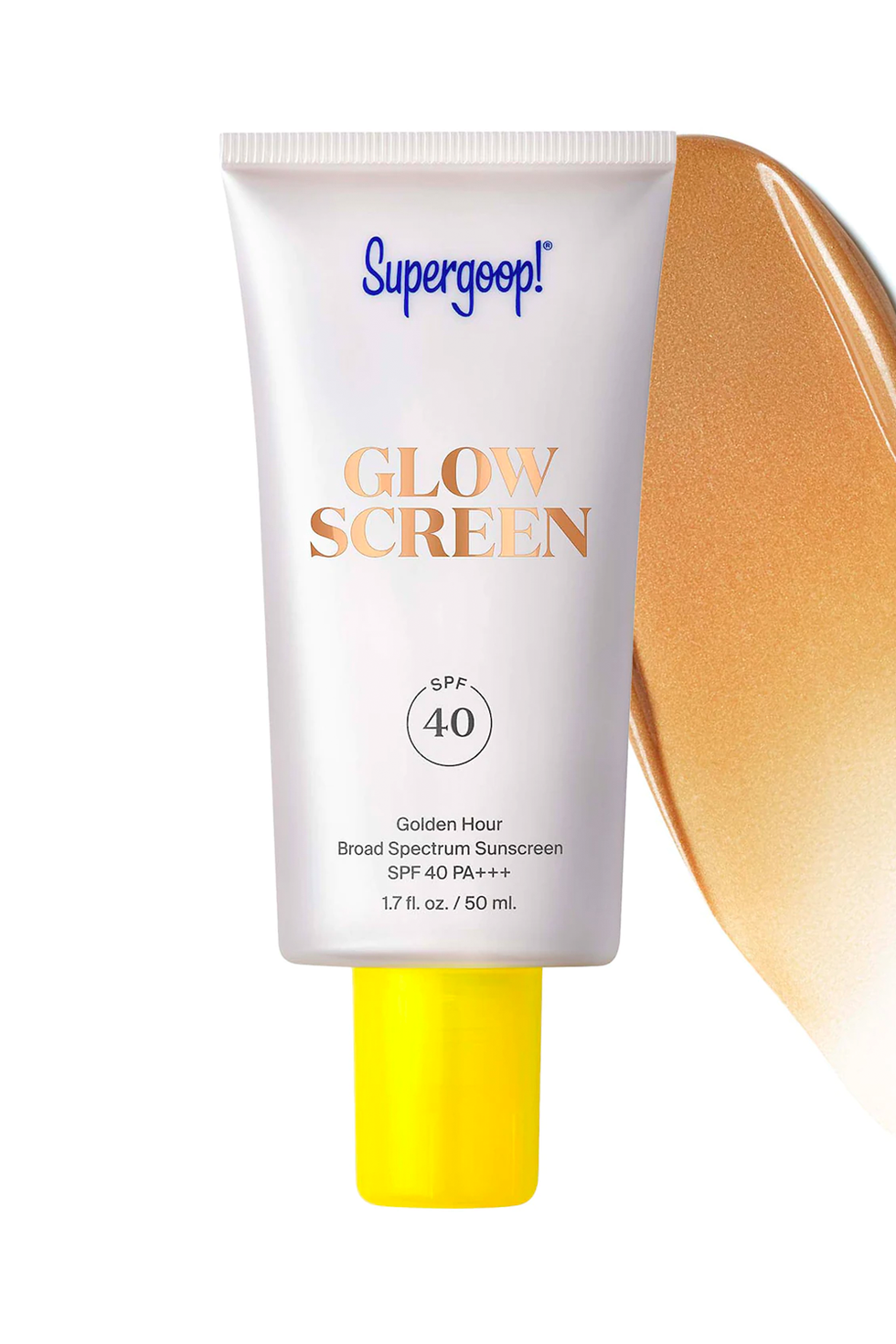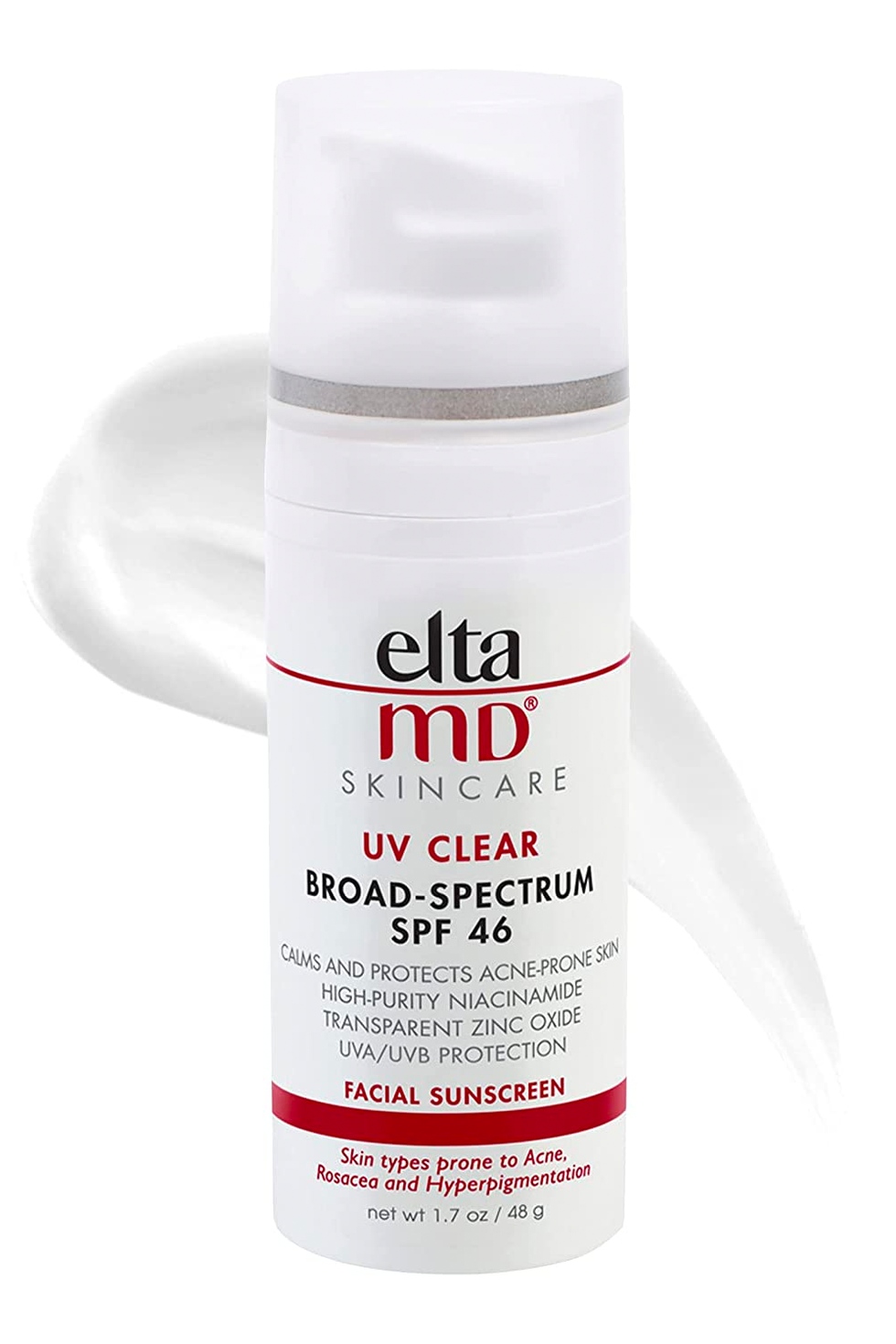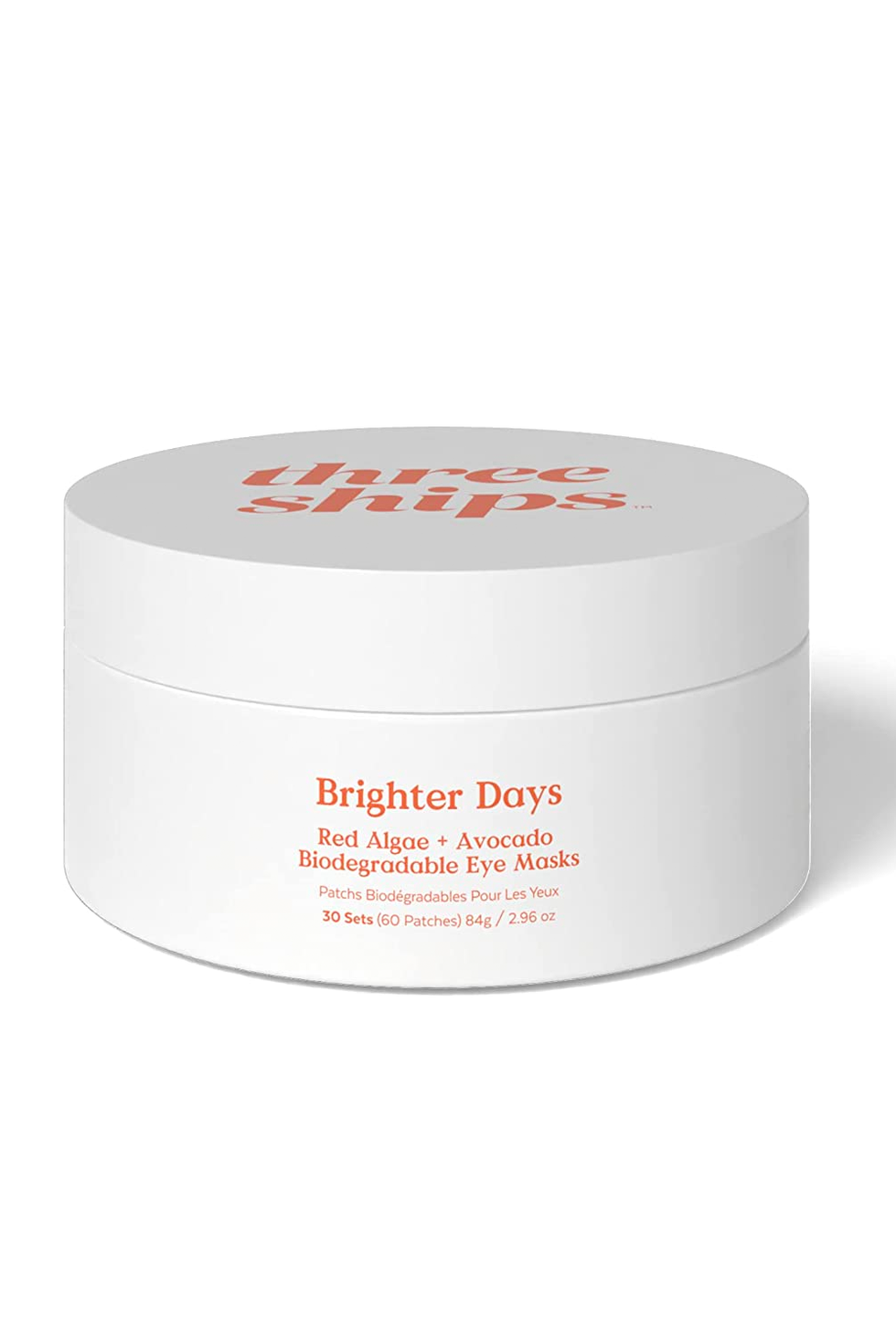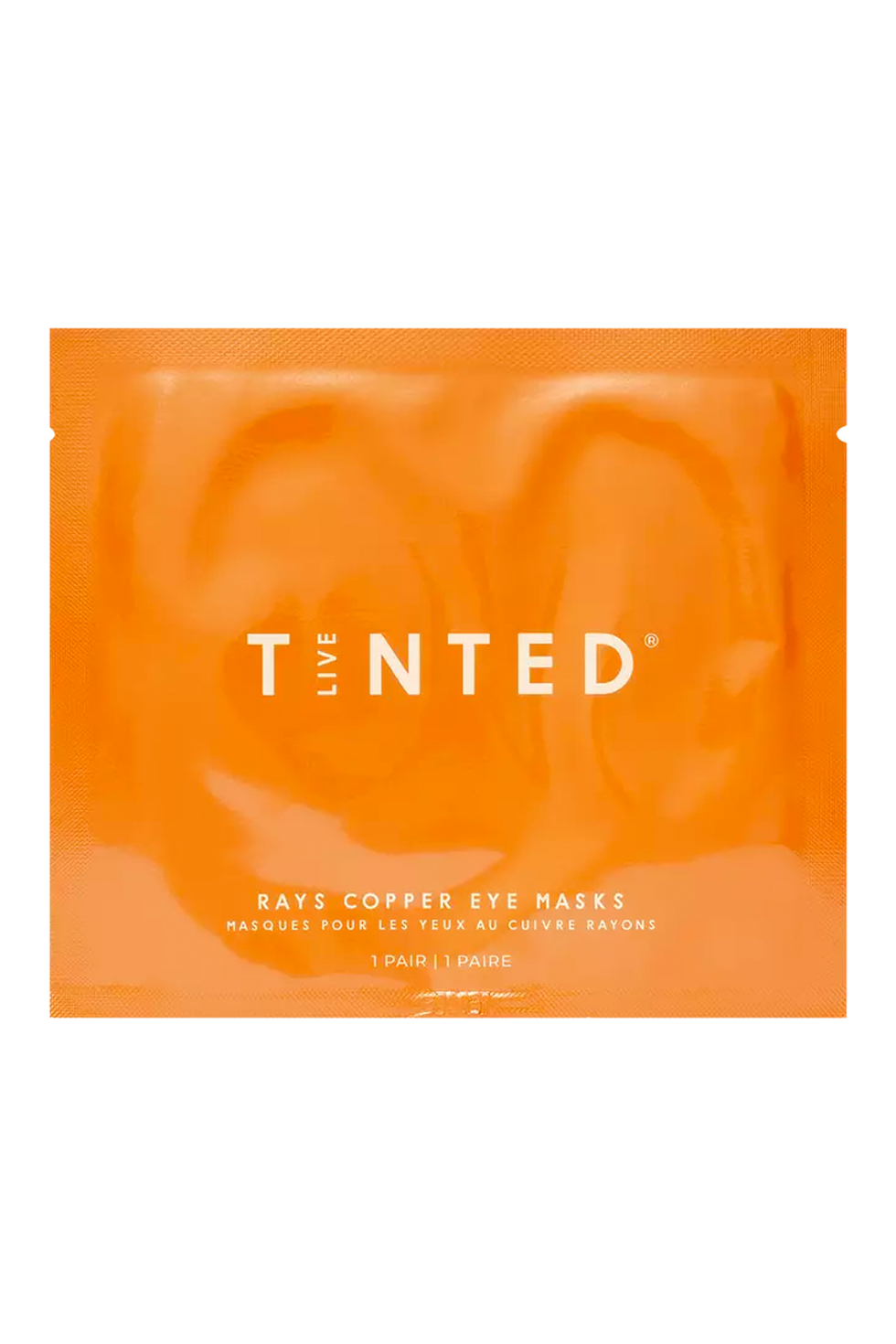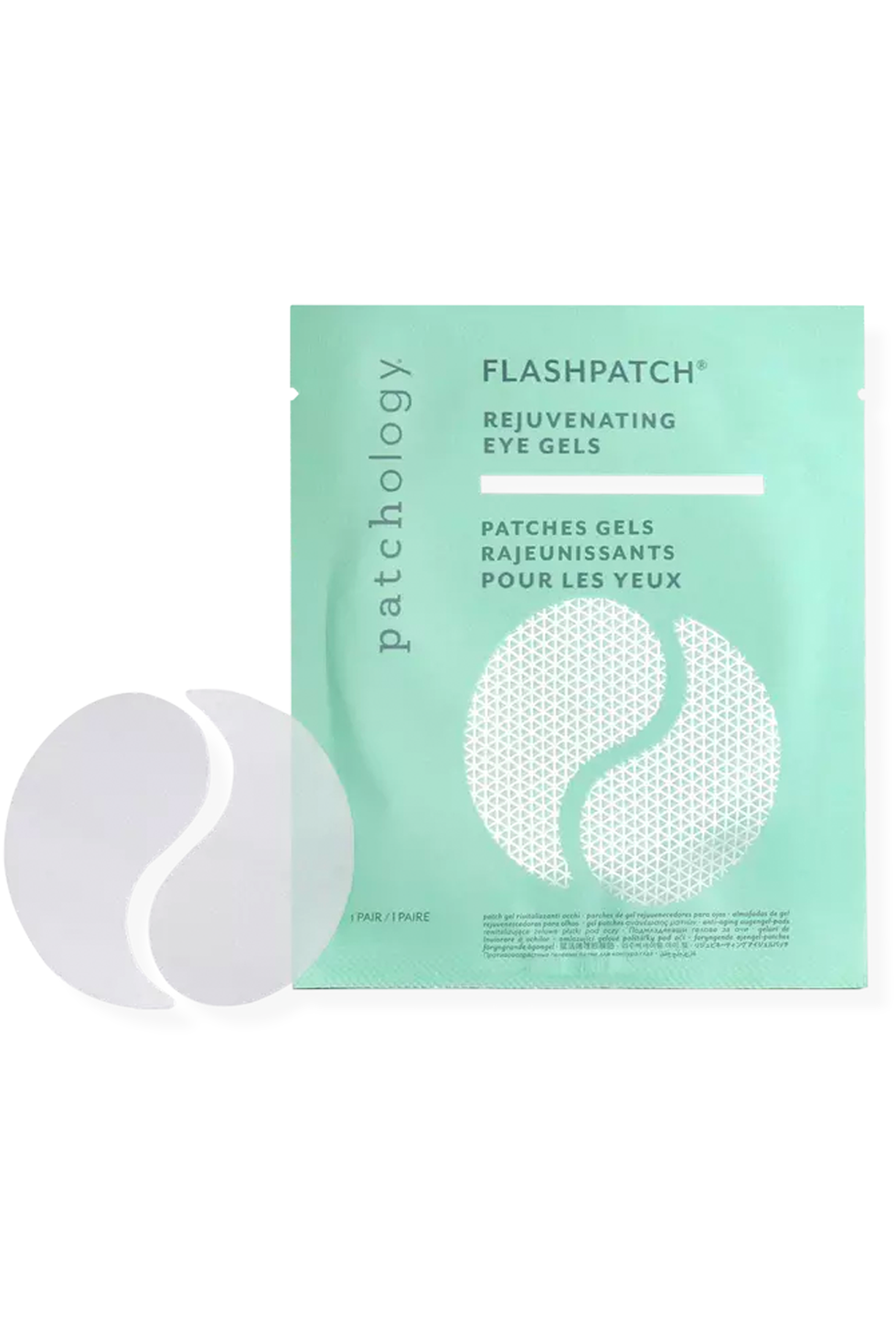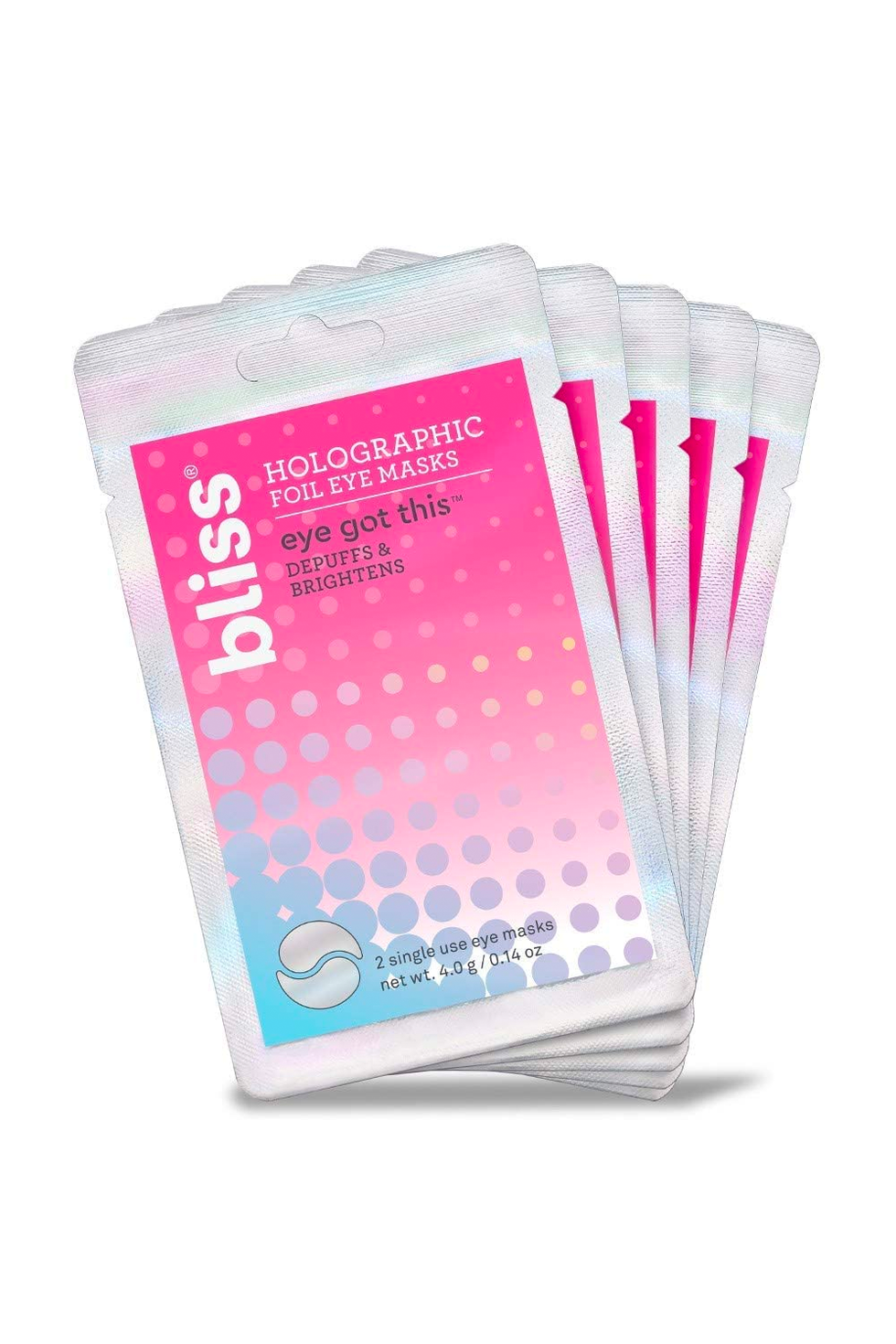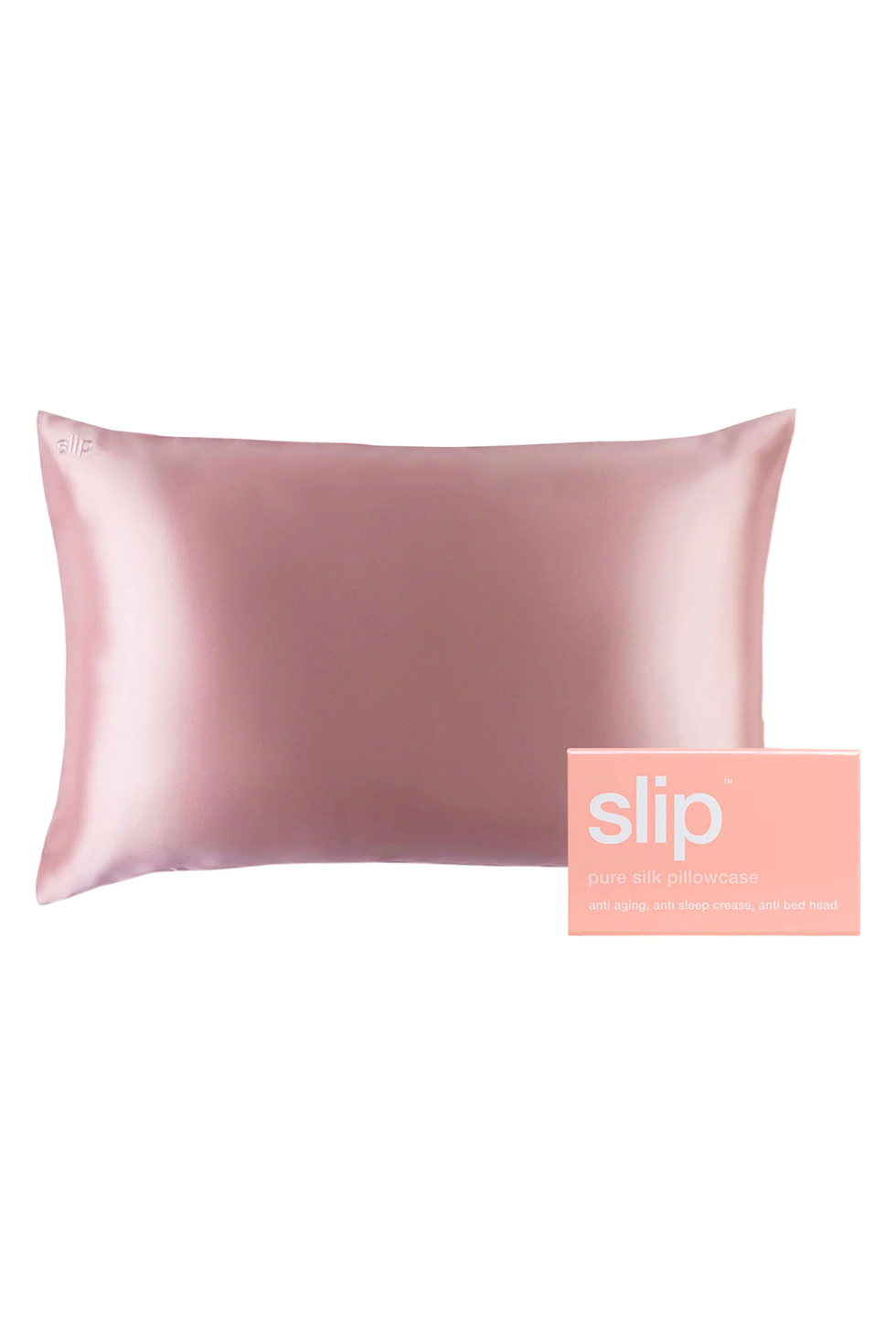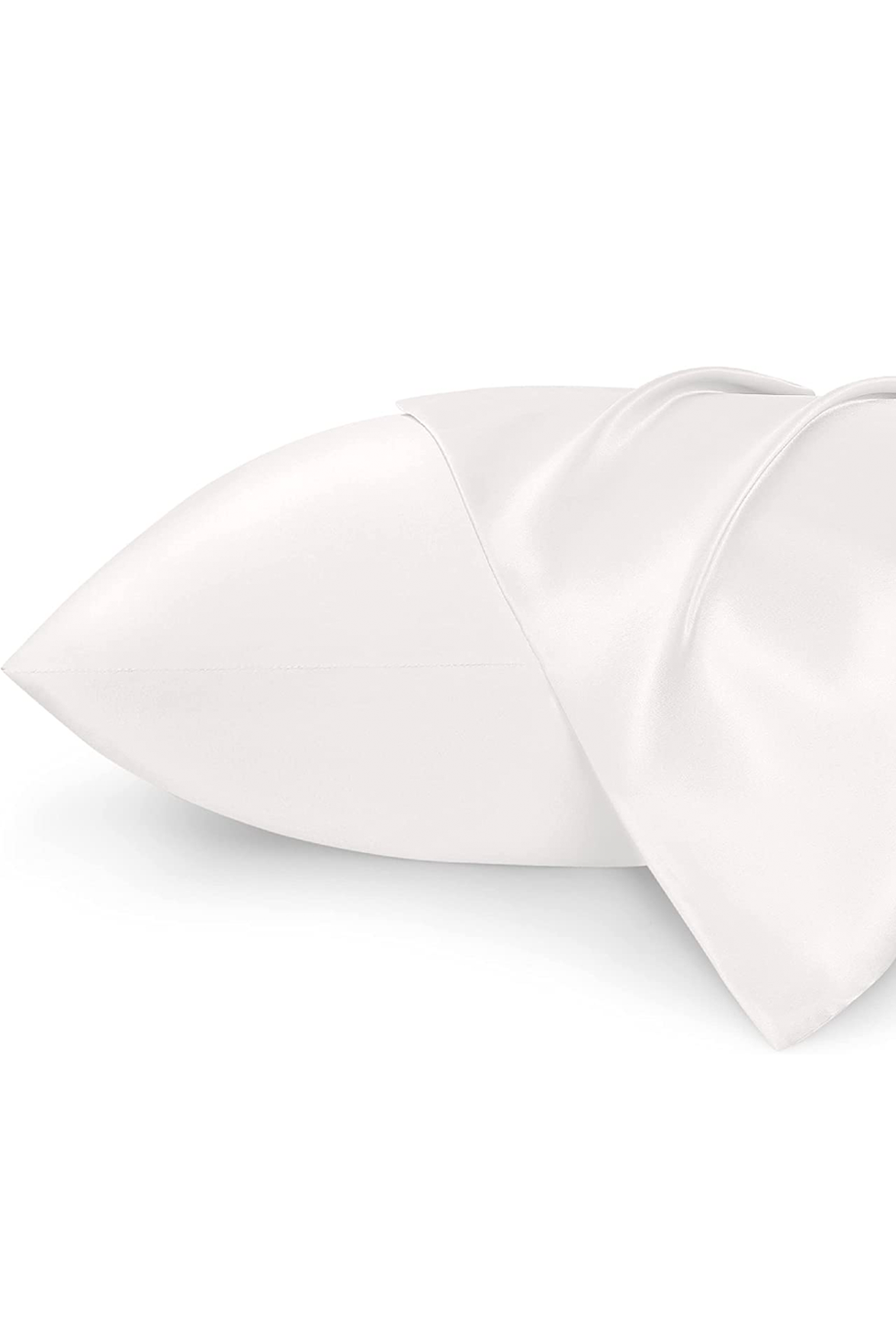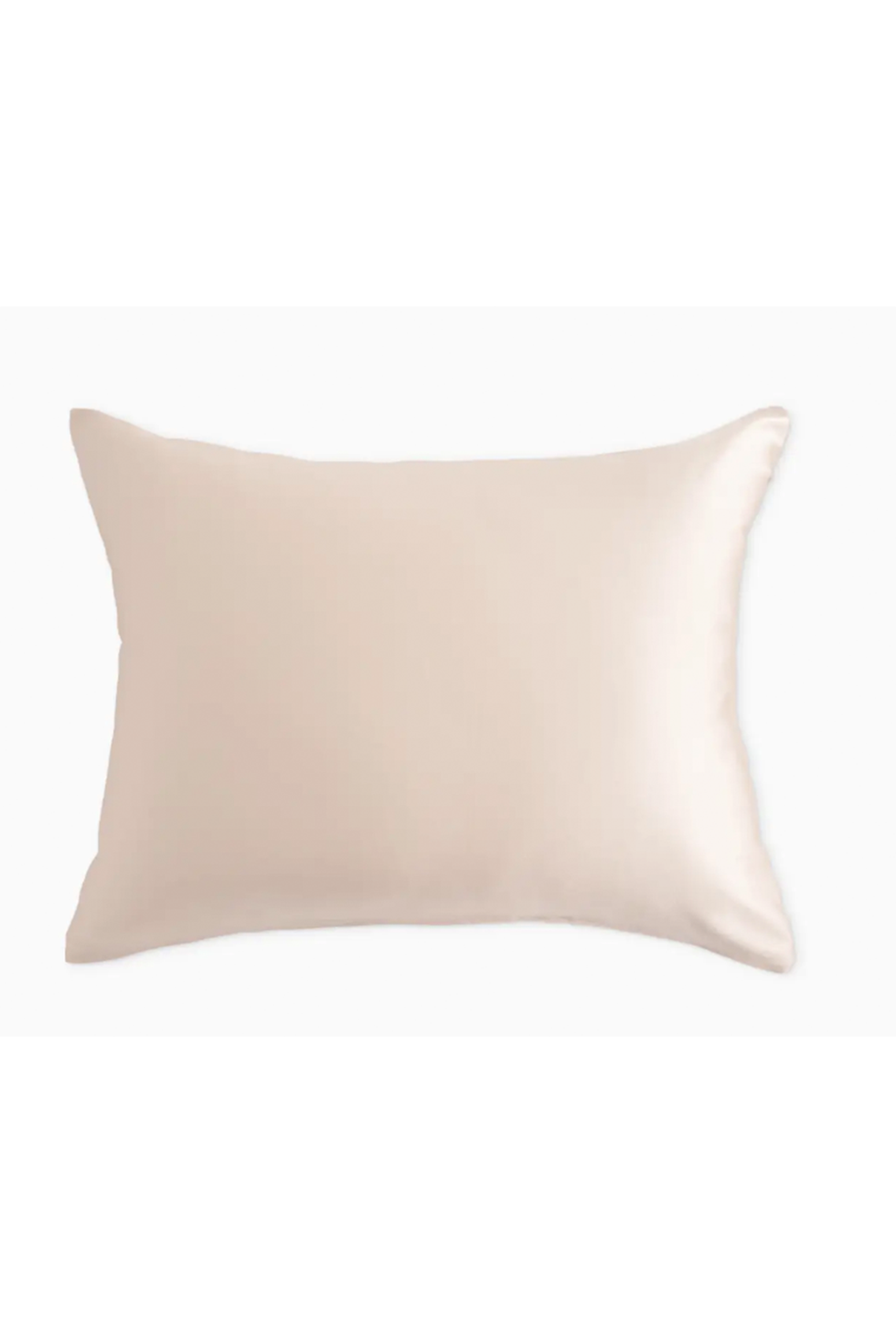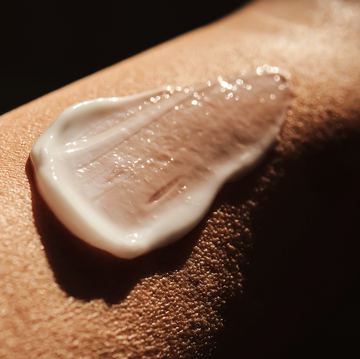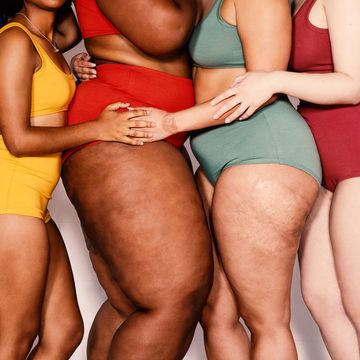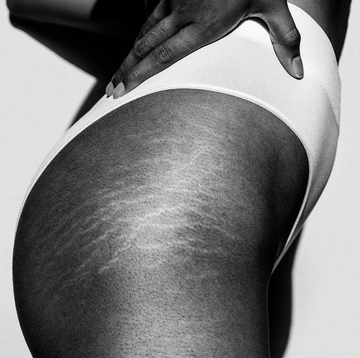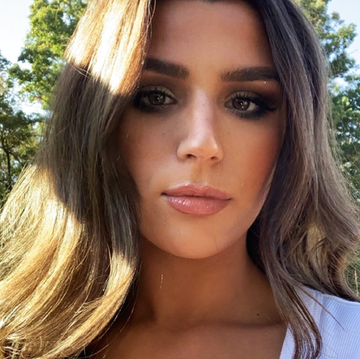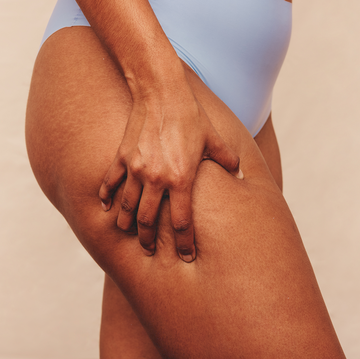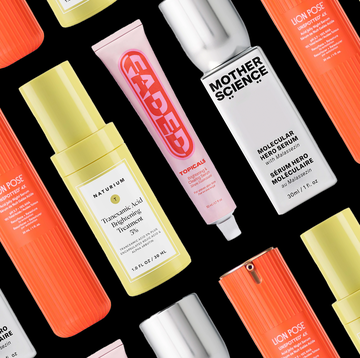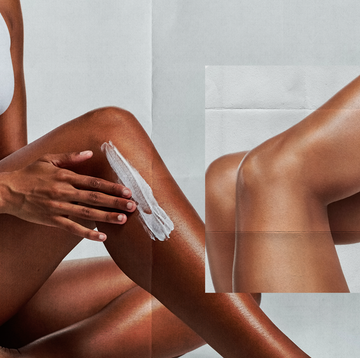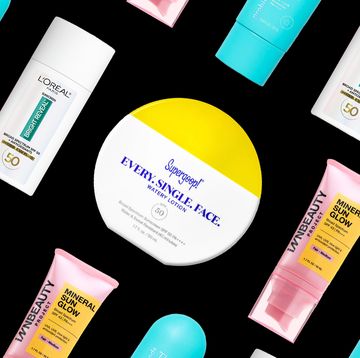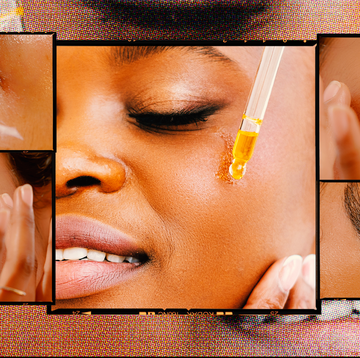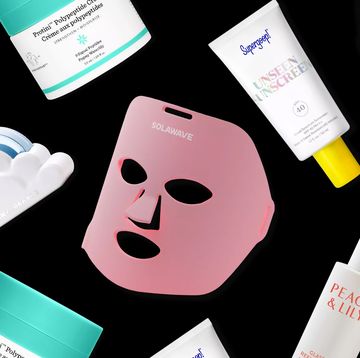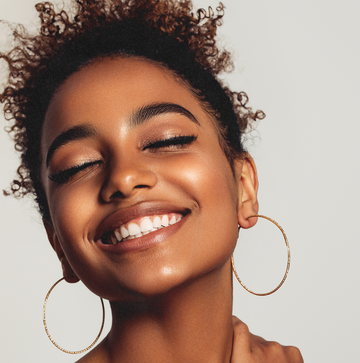A not-so-wild guess: You're here because you want a quick solution to prevent or get rid of under-eye wrinkles and fine lines fast. Maybe you're frustrated with the blah results of your current eye cream or anti-aging serum, or perhaps you just noticed your first sign of crow's feet (those itty-bitty lines that appear on the outer corners of your eyes), and now you're having a lil freakout. My word(s) of advice? Breathe. Chill. Accept. Fine lines and wrinkles are a totally normal—and privileged!— sign of aging, and even if you don’t love your under-eye wrinkles, you’ve still got options.
But before you drop a bunch of $$$ on products that may not even help, we chatted with five board-certified dermatologists for 13 no-B.S. ways to help treat under-eye wrinkles, along with the best under-eye products that actually work for 2023. Let's dive in, shall we?
What causes under-eye wrinkles?
The cause of under-eye wrinkles is multifaceted, but mostly just a regular part of aging (reminder: Even a 12-year-old has more fine lines than a toddler). “As we get older, we lose collagen and elastin—two proteins that keep your skin smooth and firm—as well as some fat,” says board-certified dermatologist Karan Lal, MD, all of which contribute to lines and wrinkles. But it’s not just internal processes that cause under-eye wrinkles: Sun exposure and frequent facial movements (like squinting, laughing, frowning, etc.) can also cause them.
How to prevent or treat under-eye wrinkles and fine lines:
Listen, there’s no way to totally prevent under-eye wrinkles, and there’s also no way to completely get rid of your fine lines either, because we’re all living, breathing humans. But! You can use a cocktail of products (and good habits) to help soften the wrinkles you have, and also help slow down the formation of future lines, too. With that being said, let’s get into it:
1. Use an eye cream with active ingredients
Are eye creams absolutely necessary? Nope—your face cream does a fine job on its own. But can an eye cream help minimize the look of fine lines? Yup! Depending on the formula, a super-hydrating eye cream can help temporarily plump the lines around your eyes. We'll get into specifics below, but according to board-certified dermatologist Mohiba Tareen, MD, these are some all-star ingredients to look for in your under-eye cream:
- Hyaluronic acid: This is a humectant that helps draw water into skin, helping hydrate and plump
- Peptides: These are building blocks of proteins that act as communicators between cells, encouraging collagen production for firmer skin
- Vitamin C: This is an antioxidant that helps neutralize free radicals, therefore defending your collagen and elastin from damage, and brighten hyperpigmentation
- Retinoids: Derivatives of vitamin A (nerd alert!) these work by speeding up skin cells turnover and kickstarting new collagen production
2. Add vitamin C to your routine
Virtually everyone (aside from those with hypersensitive skin) can and should be using a vitamin C serum. According to dermatologist Mona Gohara, MD, vitamin C is an antioxidant that protects against collagen-damaging free radicals that contribute to under-eye wrinkles and fine lines. As a reminder, your skin gets hit with free radicals all day long (see: pollution, UV rays, smoke, etc.), but vitamin C helps scatter and neutralize the free radicals before they can do major damage.
Before moisturizing, try smoothing on a vitamin C serum every morning (if you’ve got ~tough~ skin), or every other morning (if you’re new to vitamin C). Not sure where to start? I’ve gotchu:
3. Stick with retinol
“Retinol—a derivative of vitamin A—is the hero at preventing under-eye wrinkles and supporting smoother-looking skin,” says Dr. Tareen. What makes it extra special is that “retinol slows down the aging process by increasing collagen production,” she says. Basically, it tricks your skin into thinking you’re younger than you actually are (!), resulting in smoother, plumper, newer skin.
Just remember that the skin around your eyes is incredibly sensitive, which is why it’s often better to use a full-face retinol formula that’s a bit more moisturizing (like an anti-aging cream or a retinol for sensitive skin) instead of a retinol-based eye cream that’s more targeted.
But, if you’d rather stick with an eye cream, go slowly: Apply the tiniest dab (over your moisturizer) one night a week for one week, then two nights a week for two weeks, then three nights a week for three weeks, building up to every other night if your skin can tolerate it.
4. Use sunscreen every single day (seriously)
Dermatologists (and myself) cannot emphasize this enough: If you’re not wearing sunscreen every single day, you’re going to get wrinkles faster. It’s a fact. “Sun exposure is a leading cause of accelerated skin aging, including fine lines, wrinkles and hyperpigmentation,” says board-certified dermatologist Corey Hartman, MD, noting that UV rays legitimately destroy collagen and elastin in your skin. “Incorporating a sunscreen with at least SPF 30 each day during your morning skincare routine goes a long way in preventing fine lines around the eye,” he says.
And don’t worry, sunscreen haters: The SPFs below are straight-up luxurious and feel nothing like the sticky paste you were forced to use as a kid.
5. Try under-eye masks
Eye-masks aren’t just a fun self-care accessory; they can also ~subtly~ (and temporarily) soften the look of your under-eye wrinkles and lines, making them great to pop on before special events. Dr. Lal recommends looking for under-eye masks that contain hyaluronic acid (to plump your lines) and peptides (which help support collagen production), like one of these four masks below:
6. Be gentle with your skin
“In comparison to the skin on your face and body, the skin around your eye is incredibly delicate,” says Dr. Tareen, which is why she also says it’s “imperative that you apply and remove skincare products gently.” Rubbing your eyes or pulling on your lids a few times is fine…until you repeat it every day for a few years. Then, you’re in wrinkle town.
“I never recommend rough exfoliating, rubbing, or pulling around the eye area, since it can damage your skin and lead to wrinkles,” says Dr. Tareen. So what does that look like in real life? Try to use your ring fingers (which exert the least amount of pressure) when applying under-eye products, and get into the habit of tapping—not rubbing—the formulas into your skin.
7. Sleep on a silk pillowcase
There’s a reason why everyone continually praises silk pillowcases: They’re less irritating, better for allergies, and easier on your skin. Yup, believe it or not, friction from your cotton pillowcase—see: your face, rubbing against your pillow all night—can contribute to lines and wrinkles over time. Dr. Tareen recommends switching to a silk pillowcase “because it is easier for skin to move around on silk without getting stuck.”
Silk pillowcases (and silk fiber in general) are also great for anyone who deals with allergies, because silk is “a natural protectant against common skin irritants, like dust and pet dander,” says Dr. Tareen. And less irritation means a healthier, less-wrinkled skin barrier. And, because silk pillowcases are less absorbent than cotton, “they won’t strip your face from its natural oils,” she says, “which will help keep your skin more moisturized overnight.”
8. Look into PRP microneedling
As a reminder, microneedling is “a procedure in which we use extremely small needles to create microscopic tears in the skin’s surface to stimulate the skin’s repair cycle,” says Dr. Hartman. Basically, tiny injuries = fresher, tighter, and firmer skin (sounds barbaric, but it’s not too painful and yields seriously good results).
So what’s PRP microneedling? An amped-up, more effective version of classic microneedling. Platelet-rich-plasma (PRP) microneedling—also known as a vampire facial—involves your dermatologist puncturing your skin with extremely small needles and your own blood platelets and growth factors to seriously boost your collagen. The result is smoother under-eyes that are more even-toned, says Dr. Hartman.
9. Try laser resurfacing
According to board-certified dermatologist Azadeh Shirazi, MD, resurfacing lasers are one of the most effective treatments for smoothing under-eye wrinkles and fine lines. Resurfacing lasers work to stimulate collagen production in your skin, but fall into two separate camps of intensity: ablative and non-ablative. Here’s a quick breakdown:
Ablative laser treatments:
Ablative lasers (like CO2/carbon dioxide lasering and YAG lasering) are best for those with moderate to deep wrinkles who want to see results after just one session. Ablative lasers, also known as “wounding” lasers, work by targeting water molecules in your skin tissue to create gas and vaporize your skin cells, ultimately removing the top layer of your skin. In other words, ablative lasers quite literally resurface your skin—which is why they’re more intense and painful (even though you’ll be numbed).
And, as you might guess, recovery isn’t quick: Your skin will take at least a week to heal and will look incredibly peel-y and inflamed while healing. But the end result is “dramatic” says Dr. Shirazi, and may just be worth it for you and your under-eyes.
Non-ablative laser treatments:
Non-ablative lasers (like IPL/intense pulsed light), are a lot less invasive than ablative treatments. Instead of removing your epidermis (the top layer of your skin), non-ablative lasers stimulate collagen by shooting heat into your skin to remodel it, not vaporize it. The cons? The results won’t be super remarkable (you can expect subtly smoothed fine lines) and you may need several treatments. The pros? Recovery is quick (think: by the end of the day) and you won’t scab or peel.
10. Consider injectables
“Injectables can be a great option for patients who are unhappy with the fine lines and wrinkles around the eyes,” says Dr. Hartman. He regularly uses neurotoxins (like Botox, Xeomin, Dysport, etc.) alongside fillers to help treat fine lines, wrinkles, and hollowness. Basically, it’s a two-step process: “I use Botox injections to relax the muscles involved with crow’s feet, which helps diminish those wrinkles for a smoother appearance,” he says. "Then, I use hyaluronic acid fillers to fill in hollow spots that make the under eye appear darker and more tired.”
That’s not to say your dermatologist will suggest both for you (every under-eye area is unique and you’ll have a convo with your doctor about the best option)
11. Think about your favorite foods
As a red wine and pasta enthusiast, I’m the first person to say “live your life.” That said, if you’re really hung up on your under-eye wrinkles, it’s worth knowing how the foods you eat can influence your skin. it. According to Dr. Shirazi, a high intake of alcohol, sugar, and processed carbohydrates can have the biggest impact on your skin. Here’s how:
Sugar and processed carbs
In short, sugar (like, regular sugar and the sugar that comes from processed carbs) can actually damage your skin cells from within. "Sugars bind to your skin proteins—like collagen and elastin—and form byproducts called AGEs, or advanced glycation end products,” says Dr. Shirazi. Why does this matter? Because AGEs can wreak havoc in your skin, like a toddler in a museum.
Not only do AGEs “stop our cells from functioning,” says Dr. Shirazi, but they also “create free radicals that further damage skin cells, causing our collagen and elastic to break down.” As a reminder, collagen and elastin are the two proteins that keep our skin looking “tight and toned, so consuming a lot of sugar can reverse those effects,” she says.
Alcohol
After it enters your body, alcohol breaks down to something called acetaldehyde—a chemical compound that causes dehydration, inflammation, and, worst of all: free radicals that damage your DNA, says Dr. Shirazi. Similar to sugars' effect on your cells, these free radicals can break down your skin’s much-needed collagen fibers, leading to lines, wrinkles, and hyperpigmentation the more frequently you consume it.
12. Stay up to date on your vision appointments
What does eye health have to do with under-eye wrinkles? Well, if you’re skipping your appointments and constantly squinting throughout the day due to an outdated prescription, you’re “literally restructuring your face and potentially causing wrinkling around your eyes,” says board-certified dermatologist Karan Lal, MD.
13. Book a yearly check-up with your derm
So much can change within your skin in 365 days, from your skincare products to your mental health to your physical health—all of which can affect your under-eye wrinkles. So if it’s been more than a year since you last saw a dermatologist (which, ahem, I hope not? Annual skin-cancer check, I hope?), then time to make an appointment.
Trust me when I say it’s way less stressful to be told what to do by a board-certified physician, rather than trying to memorize and copy all 13 tips and suggestions listed above. So if you’re feeling overwhelmed, just head to your derm, okay?
Meet the experts:
- Mohiba Tareen, MD, is a board-certified dermatologist and founder of Tareen Dermatology in multiple locations across Minnesota. Dr. Tareen specializes in all areas of medical, surgical, and cosmetic dermatology.
- Corey L. Hartman, MD, is a board-certified dermatologist and founder and medical director of Skin Wellness Dermatology in Birmingham, AL. He is currently on the board of directors of the Skin of Color Society.
- Karan Lal, MD, is a board-certified dermatologist and the director of cosmetic dermatology at Affiliated Dermatology in Scottsdale, AZ. Dr. Lal specializes in pediatric and adult dermatology, laser surgery, and treating skin of color.
- Mona Gohara, MD, is a board-certified dermatologist in Hamden, CT, and assistant clinical professor at Yale School of Medicine. Dr. Gohara is also the president of the Women's Dermatologic Society, and her areas of expertise include medical and surgical dermatology and skin of color.
- Azadeh Shirazi, MD, is a board-certified dermatologist at La Jolla Laser Dermatology in California. She specializes in medical, surgical, and cosmetic dermatology.
Why trust Cosmopolitan?
Marisa Petrarca is a contributing beauty writer for Cosmopolitan with over five years of experience researching and writing about makeup, skin, and hair, ranging from skin-tightening cream to face fillers. She discussed under-eye wrinkle treatments with the dermatologists featured in this story and dove into reviews and research to recommend the best products.
Marisa Petrarca is a contributing beauty writer for Cosmopolitan.com. In the rare case that she’s not working on a story, you can find her testing new makeup, skin, or hair launches, binge-watching bad reality TV, or diligently working (but failing) to get her inbox to zero. Her work has appeared on The Zoe Report, POPSUGAR, and GRAZIA USA, among others. Follow her on Instagram for corgi photos and shameless self-promotion.
Deanna Pai is a freelance beauty writer and editor currently based in New York. She has more than 10 years of experience writing about beauty and wellness.
